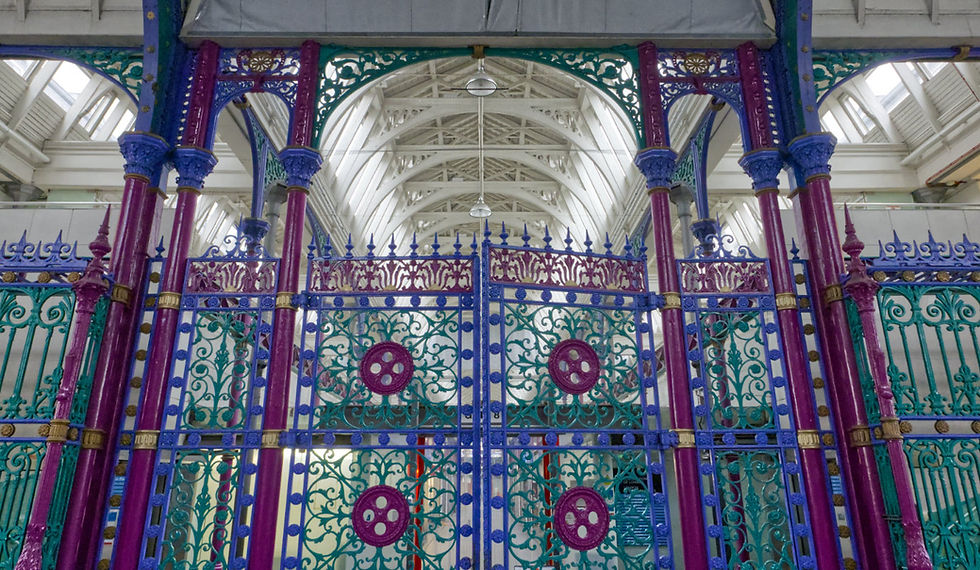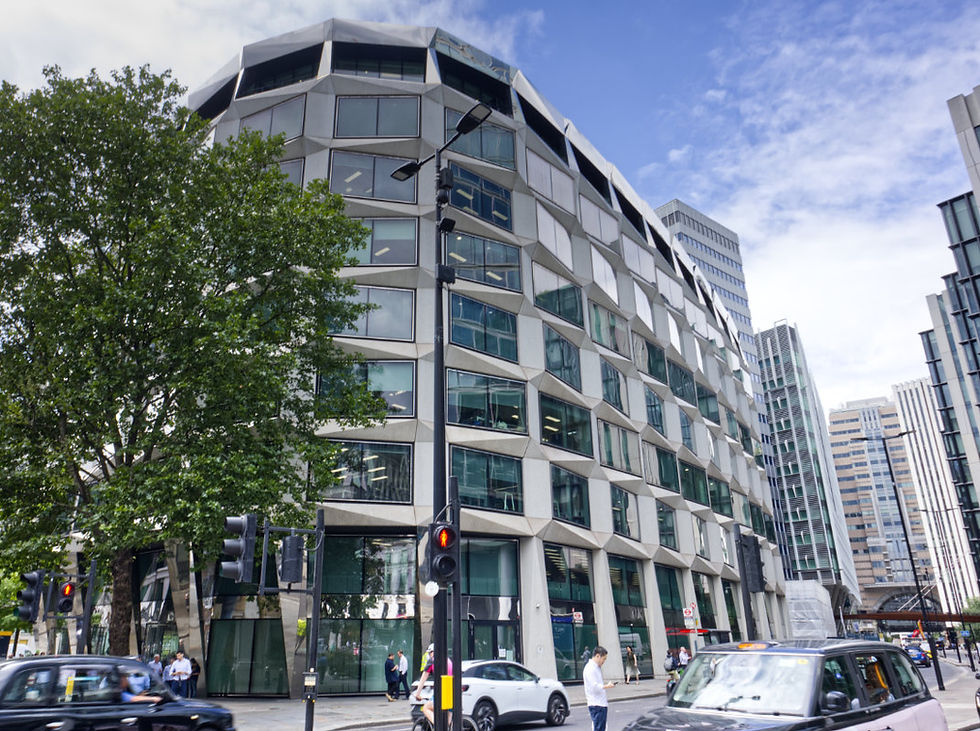Odds and Sods July 2025
- Gethin Thomas

- Aug 5
- 6 min read
In July I was in London, which you will already know if you are keeping up with this blog. If not, why not? Subscribe and you will automatically get an email notification every time I publish a new post, and untypically, subscription on this occasion doesn't involve your wallet or credit card, it is 100% free. You also, won't receive regular deliveries of toilet roll every month, or razors, or beard oil, or socks, or wine, or beer, or gin, or tequila, or lip gloss, or fizzy water, just an email. What do you expect for free?

I was in London for railway reasons, and leaving Totnes railway station at 6.00 in the morning I spotted these two benches summing up railway history, private, and publicly owned. This was the Great Western Railway before it was nationalised and became British Rail and subsequently got privatised again and returned to the Great Western name.

Arriving in London at Paddington station, I used the fairly new Elizabeth Line to transfer to Liverpool Street Station, my final destination. Arriving underground this is the ceiling of the pedestrian tunnels.

Outside the station I spotted this indication that I am now in Great Eastern territory, another former and then current railway company that also bore the British Rail name in between.

I am only mentioning Liverpool Street Station briefly as I will be following up with a seperate post about it.

Outside, and you are in the financial district of London with gleaming blue glass towers fronted with old church spires.
This church is the spectacularly named St Botolph-without-Bishopsgate, which is quite a mouthful. The church we see today, the fourth one on this spot, was built in 1729 when the earlier church on the site had fallen into disrepair. During that building process the earlier Saxon church remains were found on the site and it is thought that the Romans probably used the site before that.
The earlier church had survived the Great Fire of London in 1666 so it is a shame it was lost due to later neglect. The Parish registers are complete from 1558 and it was the first city churchyard to become a public garden.
St. Botolph died in 680 and about three hundred years later, his mortal remains, or relics, as they were called, were brought to London in various parts. Where the relics entered the city through the four city gates of the time, the churches at those gates were named after him. St Botolph's Church here was just outside the city gate called Bishop's Gate. The "without" in the name used in it's archaic form meaning outside.

Looking back and the original station hotel has been fully restored, and the open square next door is decorated with this load of balls.
"For this monumental site-specific work, Kusama has expanded the polka dot into linked forms which interact with and define the public spaces outside the new Elizabeth line entrance to Liverpool Street station. These dynamic serpentine arches were created intuitively by Kusama, hand-twisting the wires on the original models for the artwork.
Infinite Accumulation reaches over 10 meters high and 12 meters wide and covers an area of approximately 100 meters in length. Its gleaming silver spheres soar above the ground and are highly polished to reflect everything around them. This dynamic, highly reflective architectural form, mirroring the viewer and the world around it, means Infinite Accumulation responds to both individual and collective experience within the changing spaces of the urban landscape of London."
Got that?
There are several self-portraits here, one in each ball. Who of? as Mrs. Cravattte said in the film "The Rebel", starring Tony Hancock. It's worth finding it for some classic film comedy. All comedy is now classic. We'll probably soon have comedy museums where young people go to find out what comedy was and watch old films of people laughing.

Who of? Me of course. And before you say anything, yes, I am a little convex, it's a ball. Don't lose weight and then do self-portraits looking in a shiny metal ball, it sort of defeats the object.

Being London, there are always a few shouty bits of architecture about. Architects want to be noticed.
What better way to be noticed than covering your building with TECTURA ALFHA 1. That is what those little golden tiles full of holes are. Don't ask.
"For the surface, which consists of a total of 5,370 shingles, Orms focused on a particularly low-maintenance, durable and fully recyclable aluminium solution. Most of the shingles were laser-perforated to structure the appearance of the façade. When anodizing aluminium, differently to powder coating, the top layer is transformed into a ceramic protective layer by anodic oxidation, creating a matt, silky or coloured surface that is resistant to all environmental influences." speira.com

This whole development is called Broadgate.

This one, below, is almost understated, which is not what you expect in Little Britain. The street is actually called Little Britain which was a real surprise as I only ever connect that name with a comedy TV series which was so funny that it is now seriously cancelled, it was that funny. There is nothing funny on TV anymore, as I have explained, which is why "increasingly the audiences are decreasingly". To see the funny Little Britain you will have to report to the comedy museum which I may found myself.
This Little Britain is a street in London. Historically, Little Britain referred to a small district in the City just north of London Wall, including this street.
Washington Irving described this district thus........
"IN the centre of the great City of London lies a small neighborhood, consisting of a cluster of narrow streets and courts, of very venerable and debilitated houses, which goes by the name of LITTLE BRITAIN.......Aldersgate Street, like an arm of the sea, divides it from the eastern part of the city; whilst the yawning gulf of Bull-and-Mouth Street separates it from Butcher Lane and the regions of Newgate. Over this little territory, thus bounded and designated, the great dome of St. Paul's, swelling above the intervening houses of Paternoster Row, Amen Corner, and Ave-Maria Lane, looks down with an air of motherly protection."

According to Irving, its name is derived from "having been, in ancient times, the residence of the Dukes of Brittany" but this is disputed. It is not correct, as often said, that the name comes from a medieval Breton enclave, or a possession of the Dukes of Brittany. It in fact refers to one Robert le Bretoun, who owned houses and tenements here in the 13th century. The street is recorded as Brettonestrete in 1329, as Britten Strete in 1547, and as Lyttell Bretton in 1602. Wikipedia

The mention of Butcher's Lane above is no surprise, as here, nearby, are the signature cast iron gates of Smithfield Market, the London meat market of old. Smithfield meat market, which dates from the 10th century, has been in continuous operation since medieval times, and is now London's only remaining wholesale market.

Just over the road from the market is this arched entrance, viewed from behind. It is quite famous and a tourist destination in its own right and there aren't many open doors, or holes in a wall, that attract the worlds tourists. I will reveal all in a later post as the gate leads to another historic site.

This is where you will end up.

This is one of the signature brutalist towers of the Barbican Estate which I have mentioned previously here. The ancient medieval and even Roman street patterns still survive in much of the City of London. Twists, turns, narrow bits and...........

...........the resulting strange shapes that get left behind when old roads converge on a street corner. This is Charterhouse Street, next to Smithfield.

Modern businesses also find themselves with archaic remnants of former trades, like this former butcher's shop facade. This one is only a stone's throw from Smithfield market. I have no doubt that the animal carcasses were manhandled here on the back of the butcher's boy, no transport needed.

Meanwhile a million miles away in South Devon where we also still have the ancient roads in place, it is unusual, even here, to find oneself having to pull over in a village to let part of a house through.

Another upcoming post from my London trip will feature the place where you will find this elegant fellow. I have just given you a clue, above. He guards a tomb in a famous former school. He and the tomb he guards were moved here in 1614 from their original location. The school moved out in 1872. The tomb contains the mortal remains of the "wealthiest commoner in England" of his day. Subscribe to the blog if you want a shout out when it is published.




Comments